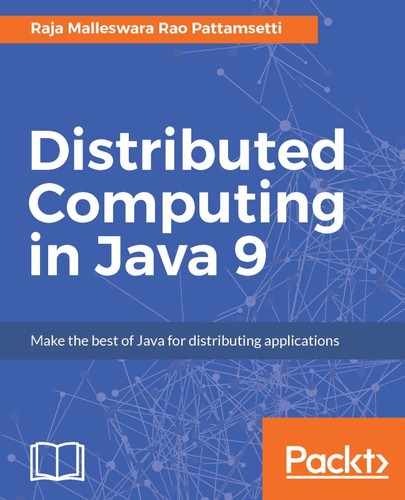Cloud computing patterns are the implementation of individual or a combination of different technology mechanisms. Together, these mechanisms provide an extremely concrete view of the cloud architecture layers and individual building blocks. These layers and blocks represent the moving parts that can be assembled in creative ways to leverage cloud environments for business automation. Each design pattern in the cloud computing catalog is associated with one or more mechanisms.
Now let's review a list of different patterns that can be configured on a cloud infrastructure:
- Storage as a Service: Storage as a Service, as the name suggests, offers storage space for your applications on a cloud infrastructure that could be remote system storage, which can be used by your applications as single local storage space logically. Storage as a Service is a widely used cloud service; it is used by most of the supplementary cloud components.
- Database as a Service (DaaS): The license for procuring an enterprise database and the overhead to manage it in-house can be very expensive. DaaS offers all the widely used database instances on the cloud (remotely) as shared databases to multiple users who only have to use a single logical instance on their application to access them without the overhead of license and management. You only pay for the users and the space of the specific instance you procured on the cloud database.
- Information as a Service: Through this service, an application can host its features as an API on the cloud for other applications so they can interact and receive the required information, for example, information on stocks or railway/airline status, and report it to their application interfaces
- Process as a Service: Through this service, an organization can host its specific business process on the cloud as a service offering to other applications so that they can access the information on the go. This helps the organization manage the business process on its own without disturbing other application interfaces.
- Application as a Service (AaaS): Also known as Software as a Service (SaaS), this provides the ability to deploy a specific application on the cloud infrastructure and make itself available to multiple users through different accounts. Examples of this kind of service include Salesforce SFA, Google Docs, Gmail, and Google Calendar.
- Platform as a Service (PaaS): PaaS has the ability to provide the entire software platform on the cloud infrastructure to cater to the needs of application/database/interface development, storage, testing, and other operational infrastructures distributed through a remotely hosted cloud platform for subscribers. Microsoft Azure and Google App Engine are examples of PaaS.
- Integration Platform as a Service (iPaaS) and Data Platform as a Service (dPaaS) are a couple of specialized applications of PaaS.
- Blockchain as a Service (BaaS) is another PaaS specialization offered by a few vendors, such as Microsoft Azure, as part of their PaaS subscription. Some of the projects, such as Docker, have captured the market by packaging the entire software, including code, runtime, system tools, and libraries, so it could be deployed on any cloud platform that procures PaaS as Container as a Service (CaaS).
- Integration as a Service: Integration as a Service offers multiple enterprise application integrations (EAIs) through the cloud service offering along with the integration interface design. It also offers the managing of the application life cycle as a service.
- Security as a Service: Security services, such as identity management and global application security, can be offered as a service through this cloud infrastructure model
- Management as a Service / Governance as a Service (MaaS/GaaS): By enforcing certain policies on other application services and information, GaaS manages other cloud infrastructures on demand
- Testing as a Service (TaaS): Through this service, a cloud platform offers another application/enterprise integration flow testing functionality as a service. You don't even need to install any software or hardware within the organization system for this.
- Infrastructure as a service (IaaS): This can be understood as a data center that provides service through cloud access. This means, instead of setting up a data center in-house, the organization can procure a remote machine and the software installed on that machine for application purposes and pay per usage. A hypervisor, such as Xen, Oracle VirtualBox, Oracle VM, KVM, VMware ESX/ESXi, or Hyper-V, runs virtual machines as guests.
- Mobile Backend as a Service (MBaaS): Some mobile and web applications would want to have both data and services and their interfaces to other social networking applications managed through a cloud platform; this is offered by MBaaS.
Out of these different patterns of cloud architectures, three patterns are important:
- IaaS
- PaaS
- SaaS
Based on the cloud architecture chosen, instead of the on-premise environment, the responsibility of maintenance is shared between the organization and the cloud provider, as shown in the following diagram:

